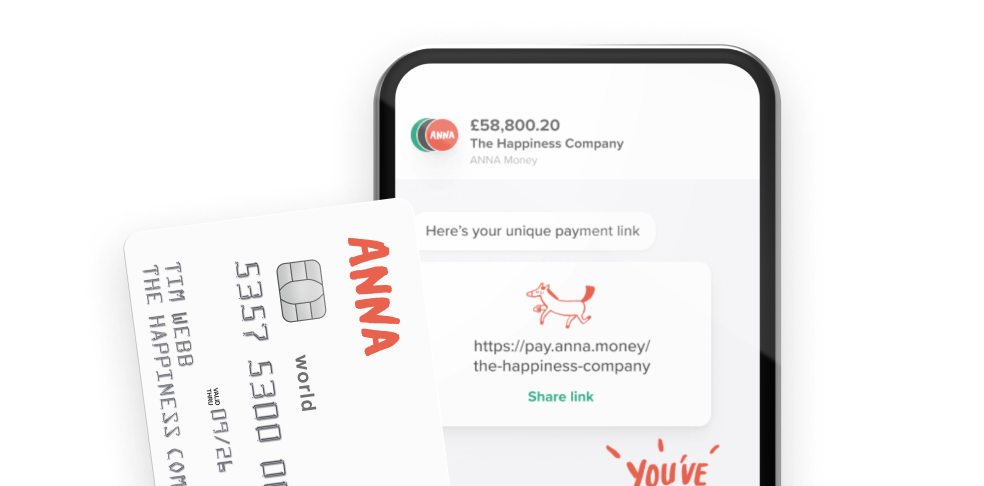Explore how to change from sole trader to limited company with clear steps on setup, tax, legal duties and making the switch smoothly.


Switching your business structure from a sole trader to a limited company is a decision that can have lasting implications for your tax obligations, legal responsibilities, and even how clients perceive your brand.
While many entrepreneurs start out as sole traders for simplicity, operating as a limited company can offer greater tax efficiency and personal asset protection.
This guide will walk you through the entire process of converting from sole trader to limited company in the UK.
You’ll learn what steps to take, how to manage the transition smoothly, and whether this change is right for your business.
Why change from sole trader to limited company?
Being a sole trader is great when you’re starting out. It's simple, flexible, and you don’t have to deal with much admin. But once your income grows or you want to scale up, that same simplicity can start to feel like a limitation.
There are three big reasons why many people decide to switch:
- Liability protection: As a sole trader, you and your business are legally the same. If something goes wrong, your personal finances are on the line. A limited company separates your personal and business assets.
- Tax efficiency: Limited company directors can take a salary and dividends, which can reduce your overall tax burden. It also opens up more opportunities for expenses and allowances.
- Professional image: Some clients and suppliers prefer dealing with a company. Being limited can boost your credibility and make securing funding or partnerships easier.
Sole trader vs Limited company – Key differences

How to switch from sole trader to limited company
Now that you understand the differences, let’s walk through what switching actually involves. These are the key steps you’ll need to take, and why they matter.
1. Register your limited company
Think of this as your official ‘launch’ as a company. Head to the Companies House website and register your limited company.
You’ll need to pick a unique company name, appoint at least one director, set up a registered office, and issue at least one share.
Alternatively, use ANNA, which streamlines this process by offering free company registration with its Basic plan.

2. Let HMRC know you're no longer a sole trader
Don’t forget to inform HMRC that you're ceasing to trade as a sole trader. This is essential to stop Self Assessment obligations and ensure you’re not taxed under both structures. You can do this through your Government Gateway account. It only takes a few minutes.

3. Open a separate business bank account
You’ll need a dedicated business account under your new company’s name. It’s legally required and helps keep your finances clean and compliant. ANNA provides this at the same time you register your company, which saves a lot of back-and-forth.
4. Transfer your business assets
If you own equipment, tools, stock, or a business website, you’ll need to “sell” or transfer them to your new company. Assign a fair market value to each item and keep a written record. This can affect your taxes, so speak to an accountant if you're unsure.
💡Did you know that ANNA offers ChatGPT Tax Terrapin, trained on over 100,000 official HMRC guides, to answer any tax-related questions quickly?

5. Inform everyone
Let everyone know you’re now trading as a limited company.
So, update:
- Contracts
- Payment details
- Invoice templates
- Your website, email signature, and marketing materials
A quick email update works well here – something like:
"Hi [Name], just a heads-up that I’ve moved from sole trader to limited company status. From now on, please make payments to [Company Name Ltd]."
6. Register for Corporation Tax
Once your limited company is formed, HMRC is automatically notified of your company’s incorporation by Companies House.
However, you must register for Corporation Tax within three months of starting any business activity.
Business activity includes buying or selling goods, advertising, renting property, employing staff, or any other commercial activity.
You can add Corporation Tax services to your business tax account if you registered your company with Companies House:
- by post
- using an agent
- using third-party software
- online but did not activate a business tax account
If you have already added Corporation Tax services, simply sign in to HMRC online services to file your Company Tax Return or make payments.
Remember, you are required to file a Company Tax Return each year, even if your company makes a loss or has no Corporation Tax to pay.
7. Set Up PAYE for Payroll
If you’re planning to pay yourself a salary (or bring in employees), you’ll need to set up PAYE (Pay As You Earn) with HMRC. This allows your limited company to pay salaries and handle things like Income Tax, National Insurance, and student loan deductions.
HMRC will issue your PAYE reference numbers, and from there, you’ll need payroll software to manage things properly.
💡If you’re after a simple, no-fuss payroll solution, ANNA Payroll is worth a look. It’s designed for small businesses and is officially recognised by HMRC.
Here’s what you get with ANNA Payroll:
✅ Easy payroll for directors – Set yourself up and start paying a monthly salary in just a few clicks
✅ Add employees easily – Include up to 5 employees in your monthly filing
✅ Automatic pension calculations – Handles employee contributions and auto-enrolment
✅ Student loan repayments – Easily include them where applicable
✅ All the documents you need – Automatically generates and stores payslips, P45s, and P60s securely
✅ Direct filing to HMRC – Generate payslips and file payroll in minutes
✅ Reminders for tax deadlines – So you never miss payroll-related filings
✅ Integrated with ANNA Business Account – Draft payroll payments are created automatically (though you don’t need an ANNA account to use the payroll system)
8. Cancel and re-register for VAT (if applicable)
If you were already VAT registered as a sole trader, cancel that registration and reapply under your new company. If you weren’t registered but now expect turnover above the threshold (£90,000 from April 2024), it’s time to register.
💡 If you’d rather not wrestle with HMRC forms on your own, ANNA VAT Registration offers an easier route – ideal if you're already using their business account or payroll.
✅ Easy-to-use VAT registration – ANNA makes signing up for VAT simple and stress-free, helping ensure you’re fully HMRC-compliant without the hassle.
✅ Expert support as you go – The built-in AI tax assistant is on hand to guide you through the process if you get stuck.
✅ Automated VAT returns with +Taxes – After you’re registered, ANNA can handle your VAT bookkeeping and submissions. The smart Pots feature even puts aside VAT for you automatically every time you get paid, so you're not left scrambling at tax time.
You’ll stay compliant and save time – all while keeping your tax money where it belongs (out of your main account and ready for HMRC).
9. Review insurance coverage
Your old sole trader insurance policies won’t carry over. You’ll need to get new policies in your company’s name. This includes public liability, professional indemnity, and employer’s liability if you have staff.
10. Set up proper bookkeeping and filing systems
As a limited company, your responsibilities grow. Keep records of income, expenses, and company decisions. File accounts annually with Companies House, and don’t forget Confirmation Statements. ANNA can handle most of these on your behalf.
Final thoughts
Switching from a sole trader to a limited company is a significant decision, but if your business is growing or you’re planning to scale, it may be the right move. You’ll gain stronger legal protection, more flexibility with tax planning, and a more professional image that can help win bigger clients or contracts.
Yes, there’s a bit more admin involved. But once you’re set up, running a limited company day-to-day can be just as smooth, especially with the right tools and support behind you.
Why register your limited Company with ANNA?
If you want a fast, simple way to register your business and set up everything in one place, ANNA is a great option. From company formation to banking, payroll, and taxes, ANNA makes the whole process seamless.
✅ Free and easy company formation
Register your company in just 3 simple steps, and ANNA handles the rest. You’ll receive your certificate of incorporation within hours. Additionally, if you opt for one of the enhanced support plans, Companies House fees are also covered.
✅ Built-in business account
When you register your company with ANNA, you can open a business account at the same time – no extra forms, no waiting. It includes:
- A debit Mastercard
- Local and international payments
- In-app invoicing and receipt scanning
- Automated savings Pots
- Up to 40% cashback on selected spend categories
✅ Flexible plans for every business
Choose a plan that suits your budget and stage:
- Basic – One-off setup for just £19 + VAT
- Essential – Annual plan with tax and filing support
- Privacy – Includes a prime London address to keep your personal one private
- Total Support – All-in-one tax, payroll, filing, banking, and registered office support
✅ Add-ons to simplify life
Need to register for VAT, set up PAYE, file your Confirmation Statement, or get a virtual office address? ANNA lets you add everything you need during sign-up, with transparent pricing.
✅ Tax and compliance covered
With ANNA +Taxes, your bookkeeping, VAT, Corporation Tax, and PAYE are all handled in one place. You’ll get reminders, real-time calculations, and even expert help if you need it.
Read the latest updates
You may also like
Open a business account in minutes




![How to Start a Currency Exchange Business in the UK [Guide]](https://storage.googleapis.com/anna-website-cms-prod/medium_Cover_3000_Landscaping_Business_Names_Creative_Name_Ideas_daad2f9e2a/medium_Cover_3000_Landscaping_Business_Names_Creative_Name_Ideas_daad2f9e2a.webp)




![140 Creative Tutoring Business Names [Ideas & Examples]](https://storage.googleapis.com/anna-website-cms-prod/medium_Cover_3000_Landscaping_Business_Names_Creative_Name_Ideas_d7964059b3/medium_Cover_3000_Landscaping_Business_Names_Creative_Name_Ideas_d7964059b3.webp)

![How to Start a Self-Employed Business in the UK [Guide]](https://storage.googleapis.com/anna-website-cms-prod/medium_Cover_3000_Landscaping_Business_Names_Creative_Name_Ideas_fe5b6edef1/medium_Cover_3000_Landscaping_Business_Names_Creative_Name_Ideas_fe5b6edef1.webp)
![How to Start an Electrician Business in the UK [Guide]](https://storage.googleapis.com/anna-website-cms-prod/medium_Cover_3000_How_to_Start_a_Car_Detailing_Business_Successfully_74488a6268/medium_Cover_3000_How_to_Start_a_Car_Detailing_Business_Successfully_74488a6268.webp)
![Advantages and Disadvantages of a Sole Trader Business [2026 Guide]](https://storage.googleapis.com/anna-website-cms-prod/solotrader3000_2f768297ac/solotrader3000_2f768297ac.avif)
![Can Sole Traders Have Employees? [Rules Explained]](https://storage.googleapis.com/anna-website-cms-prod/medium_cover_3000_Can_Sole_Traders_Have_Employees_Rules_Explained_0a5a2f5654/medium_cover_3000_Can_Sole_Traders_Have_Employees_Rules_Explained_0a5a2f5654.webp)



